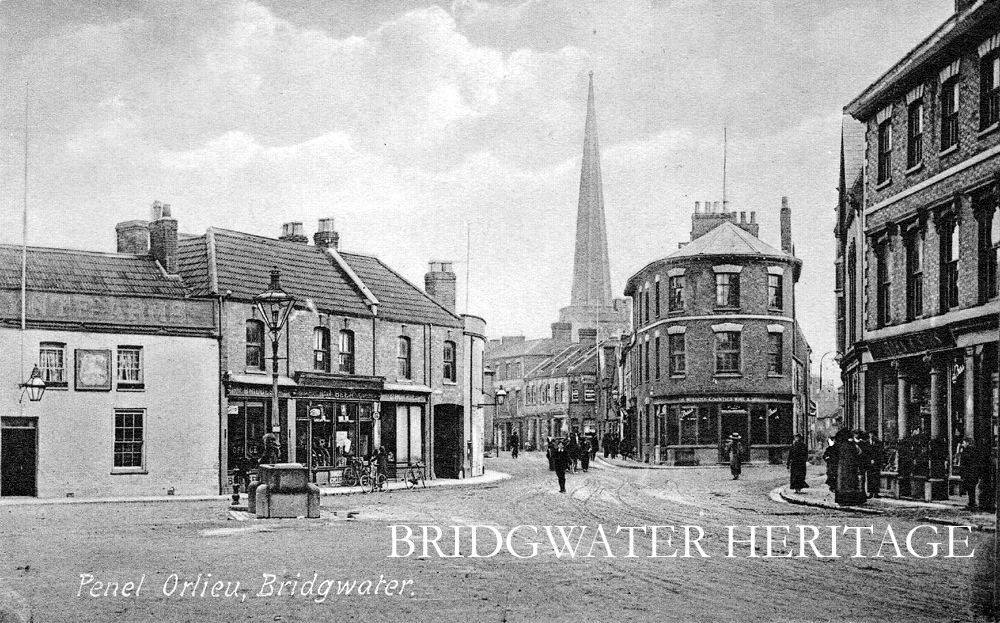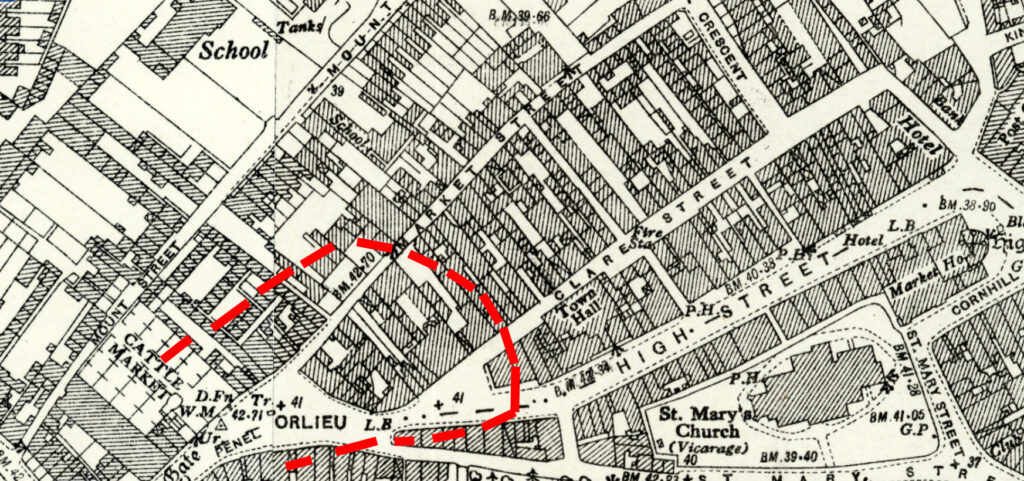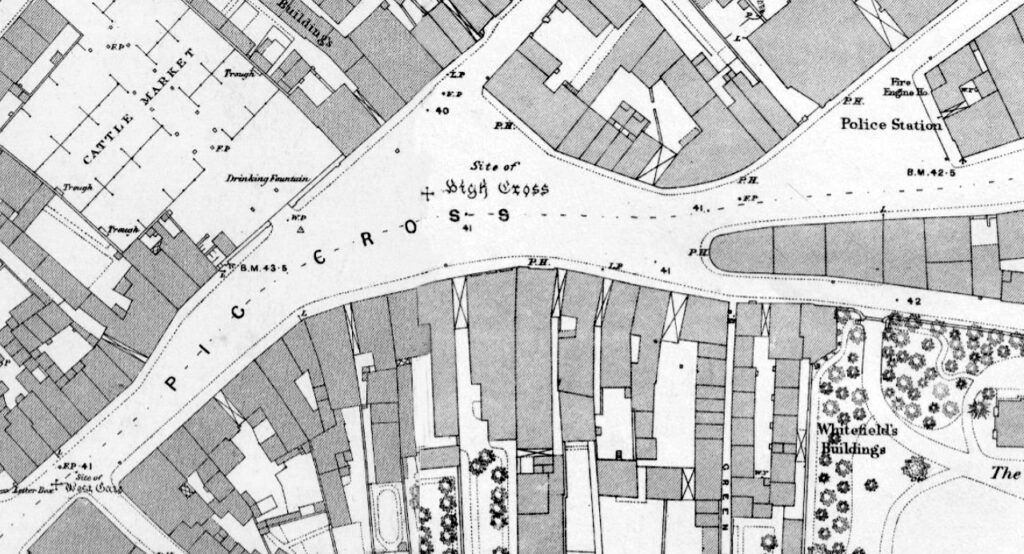
Because of the Angel Place shopping centre, there is little left of old Market Street or Clare Street. Both were medieval. Clare Street, for most of its history, was known as Back Street, as it was behind the High Street. We also find it called Horlock Street in 1321, then Orlove or Orlieue a little later, apparently after important men, possibly the same man, who lived there. Where the name ‘Clare’ Street came from is unknown to me, it seems to be late Victorian.
Market Street we find as Penel Street in 1362, referring to John Pynel who lived there. Penel Street had become Prickett’s Lane by the eighteenth century, after another resident.
The broad area where Pynel Street and Orlieu Street met became Penel Orlieu, although it should be noted that the bit we specifically call Penel Orlieu today, confusingly was almost universally referred to as Pig Cross from about 1609. In medieval documents it was the Orffair – meaning Cattle Market, Orf meaning cow, Fair: market. Anyway this cattle market, initially held in the street and then a dedicated market place, was held until 1935, is where the name Market Street comes from, as well as the Old Market pub (as opposed to the ‘New Market’ pub where the market was established.


MKP 2020
The name Penel Orlieu is a corrupted combination of two medieval street names in the vicinity of the West Gate.
Orlove Street (variously Ordlovestrete, Oreloue, Ordlof, Ordloue, Orloues, Horlokestrete Horlokkestrete) is probably derived from the family of Ordlof (Bridgwater document of 1260) or Orloc. The street ran parallel to High Street from the Castle Ditch to Pig Cross, and its remnants are now called Clare Street.
The first documentary reference is dated 9 December 1321: “Conveyance of two-ninths of a burgage in Horlokesstrete by Nicholas Prymmensone to John Parewastel and Iseult, his sister”.
The document is preserved in the Somerset County Record Office. It is of particular interest, as Iseult Parewastel made a pilgrimage to Jerusalem some time after 1321. There, she was captured and tortured on the rack by the Saracen. She escaped, and returned to Bridgwater by 1368.
Penel Street (Pynelysstret, Pynelestret, Pynellesstret) was very small street at the west end of Orloue Street. It may have been synonymous with Cronile’s Lane.
In a bond dated 24 March 1352, John Pynel leases a tenement with two curtilages in Pynel’s Street (Pynelysstret) to John le Eyr, a baker or miller (pistori) and Isolda, his wife.
Source: Bridgwater Borough Archives 1200-1377, ed T B Dilks, Somerset Record Society, vol 48 1933
Dr Peter Cattermole 23 September 2010
